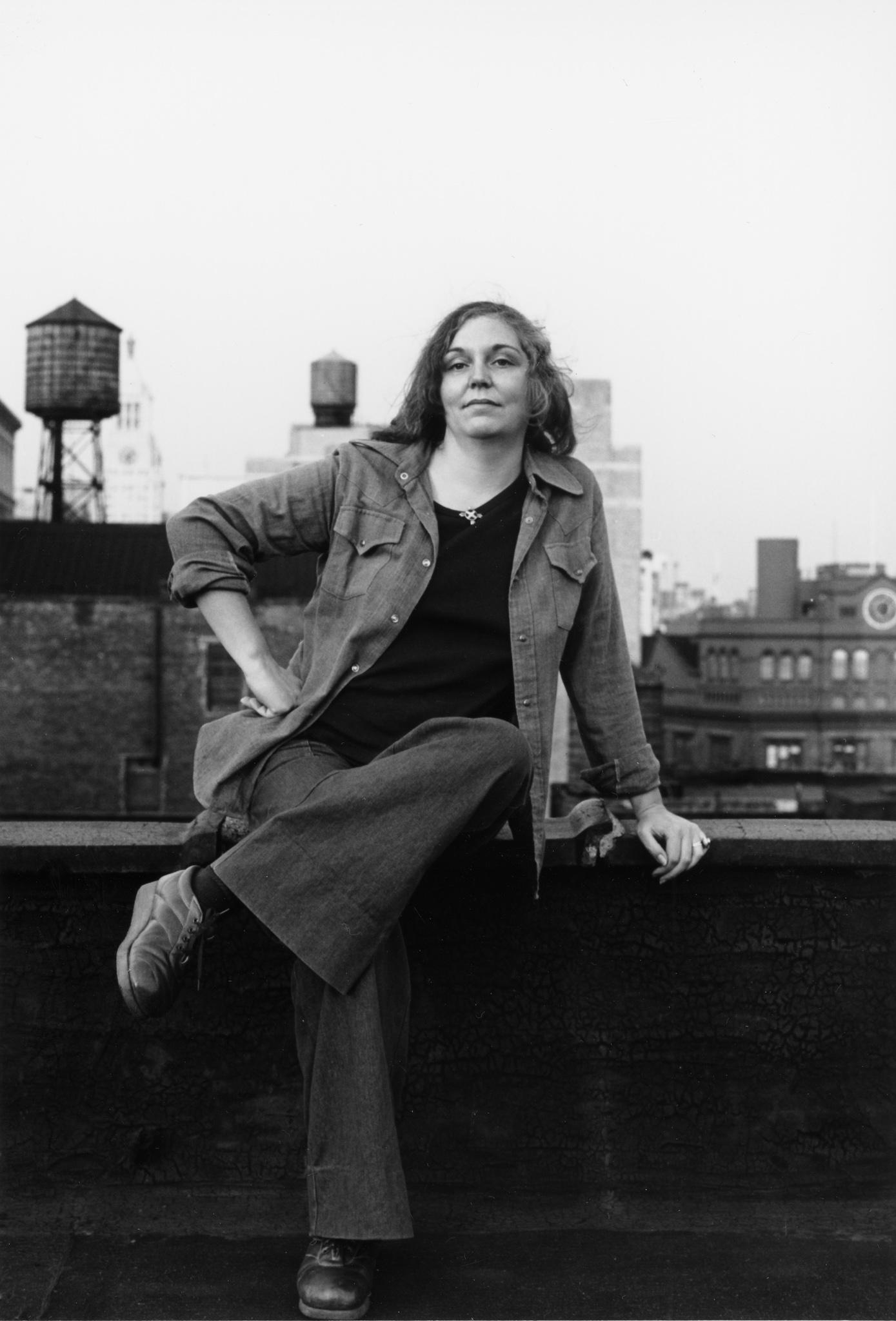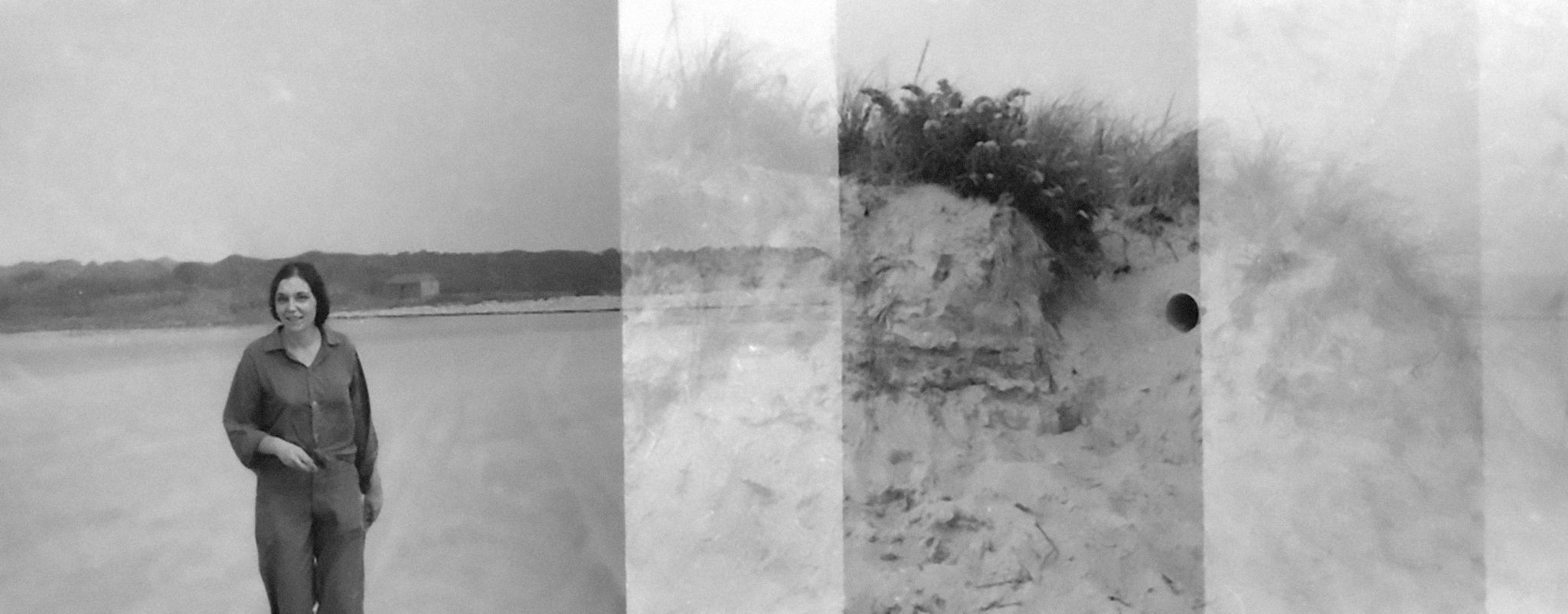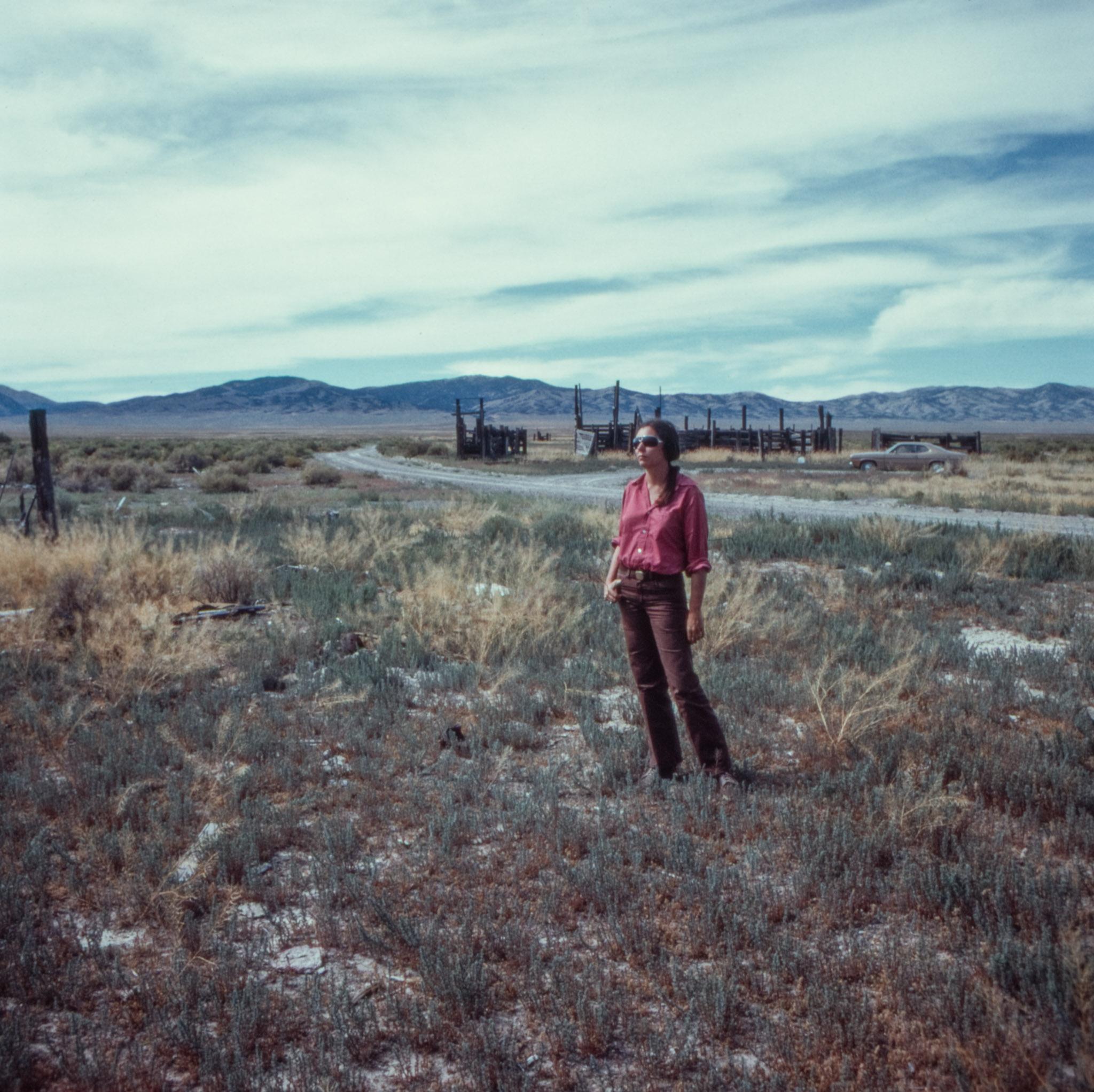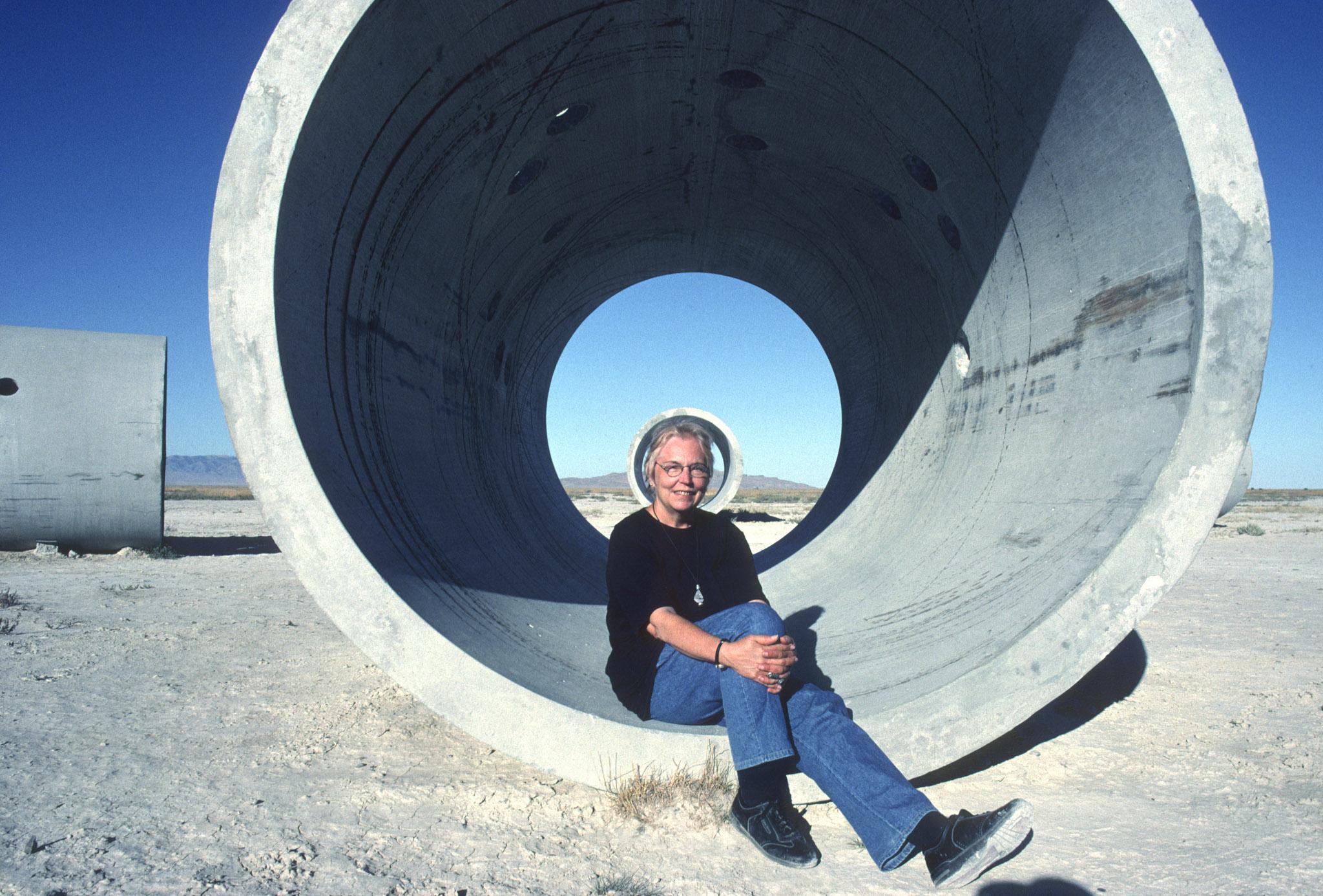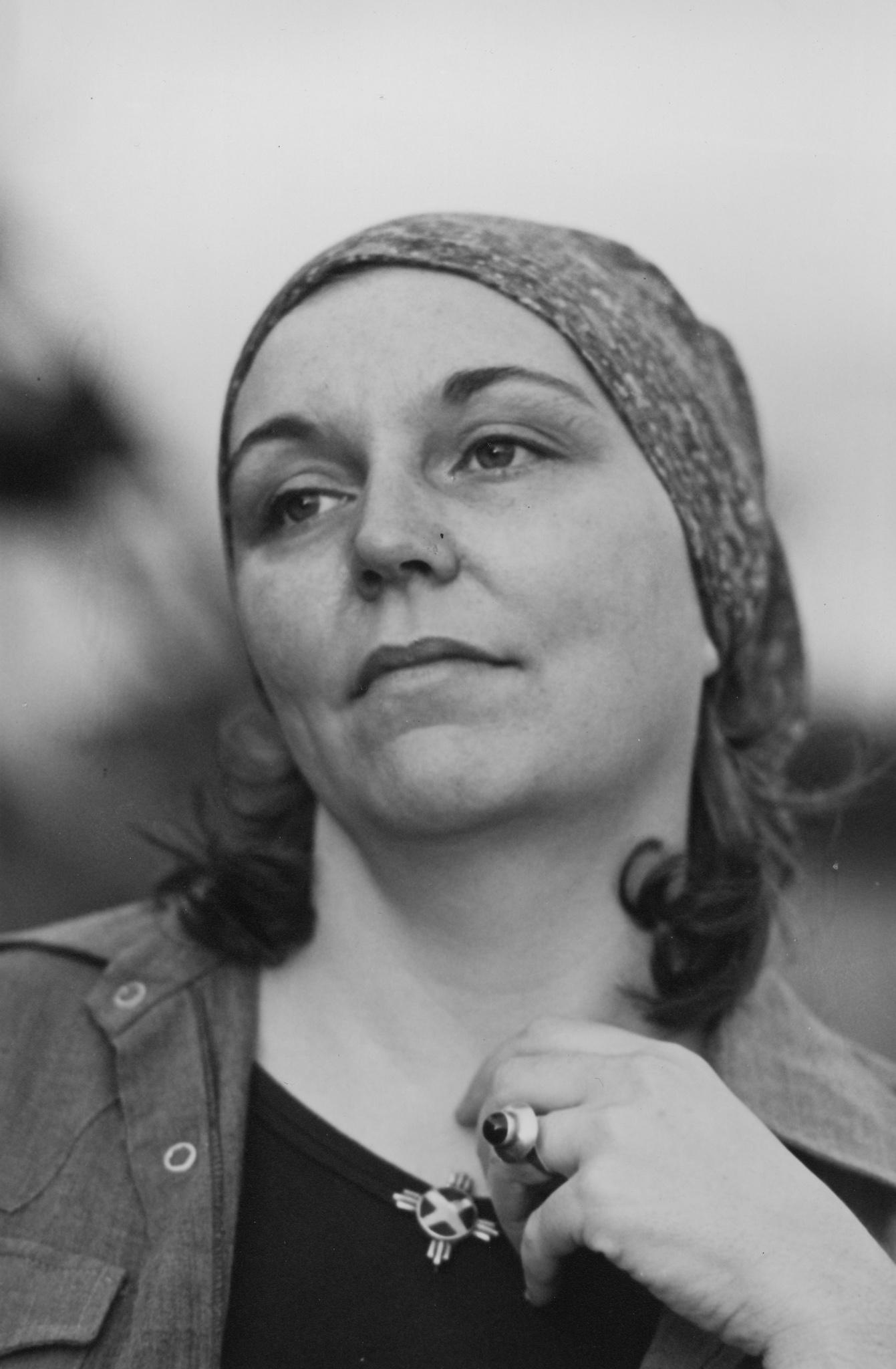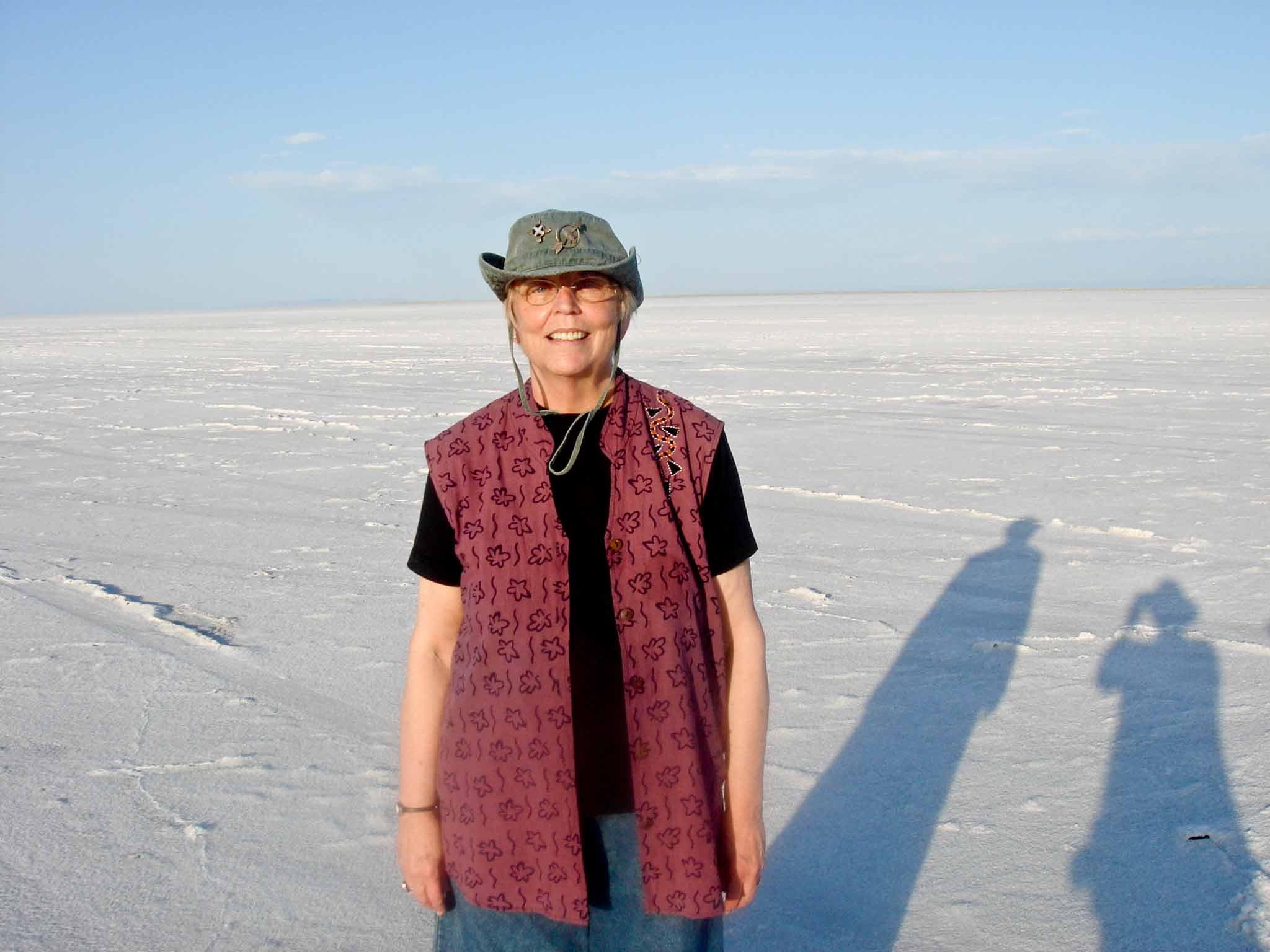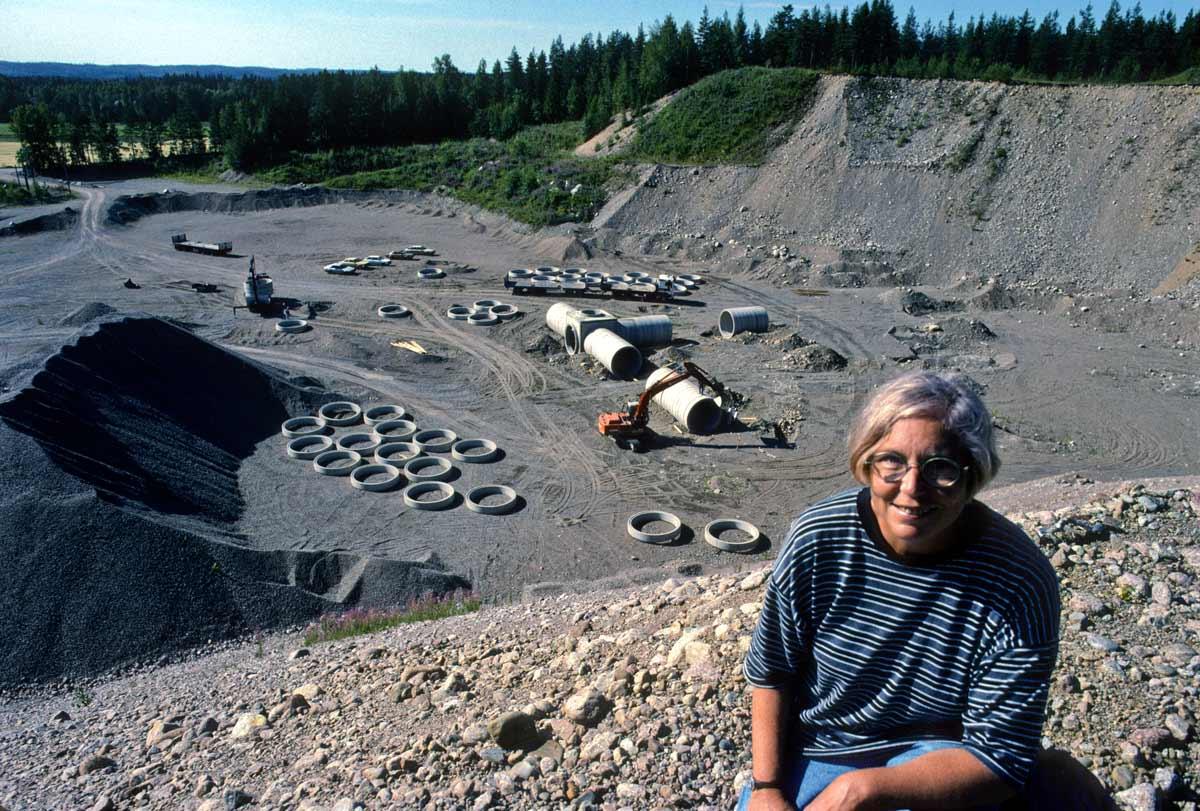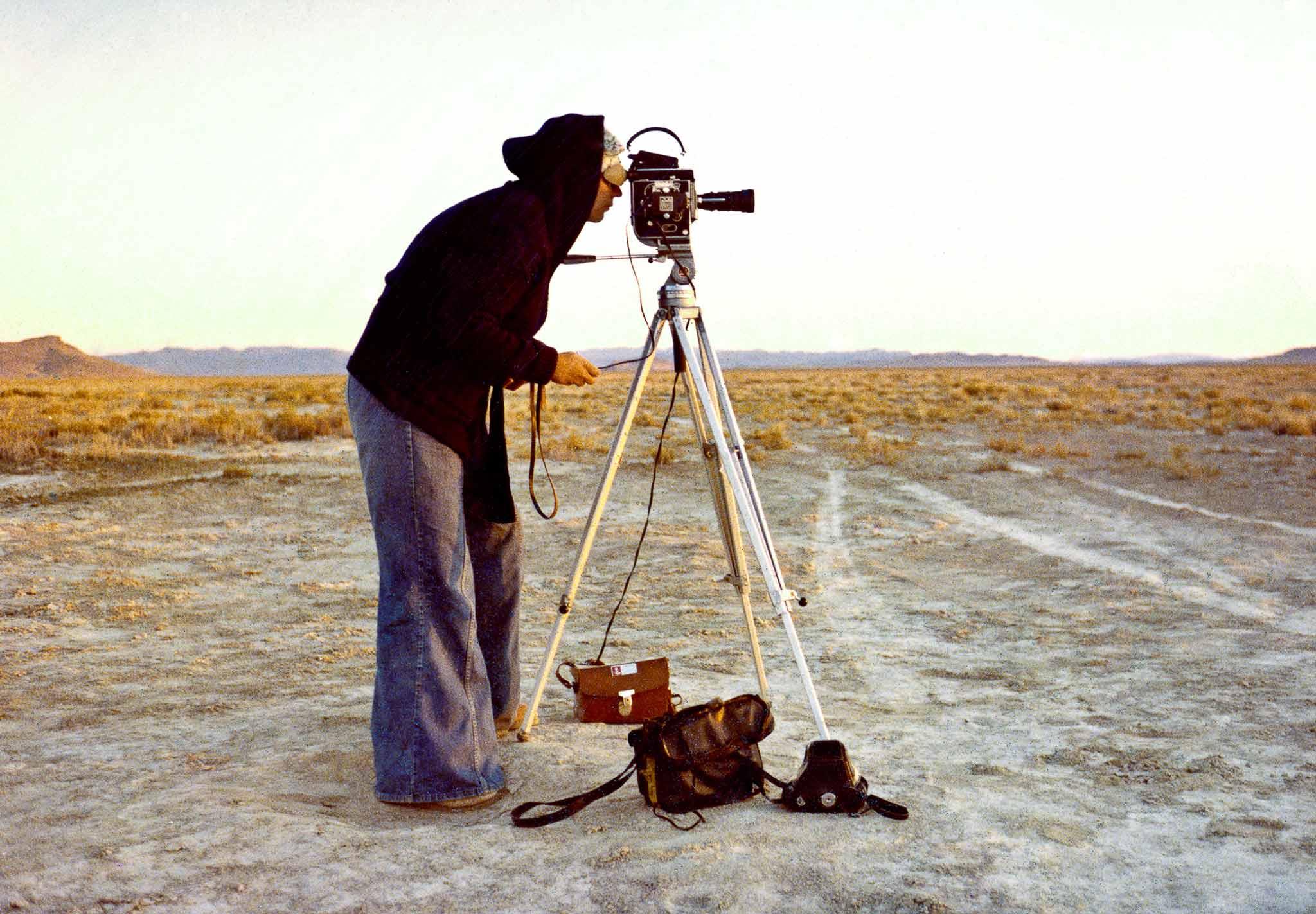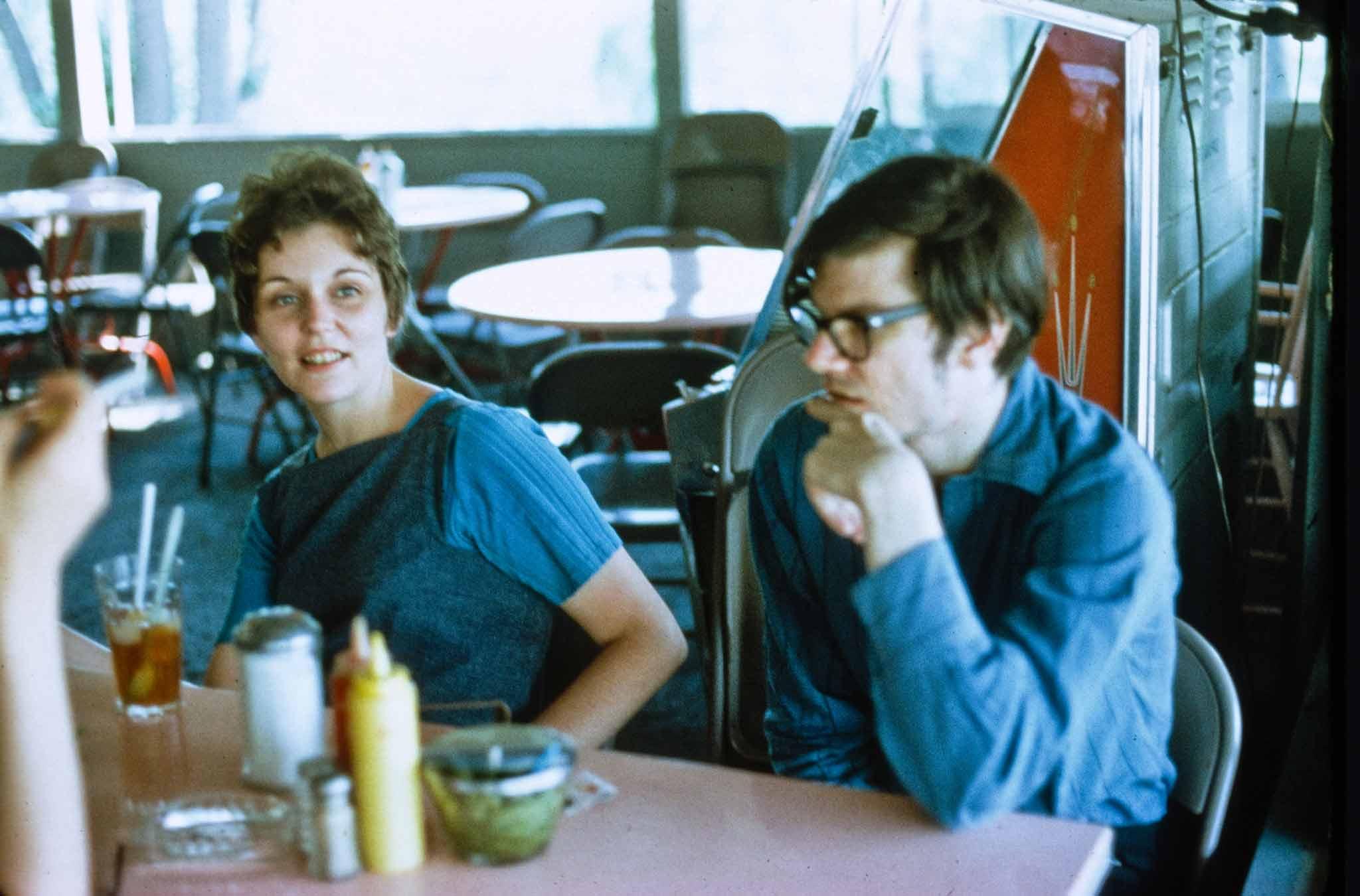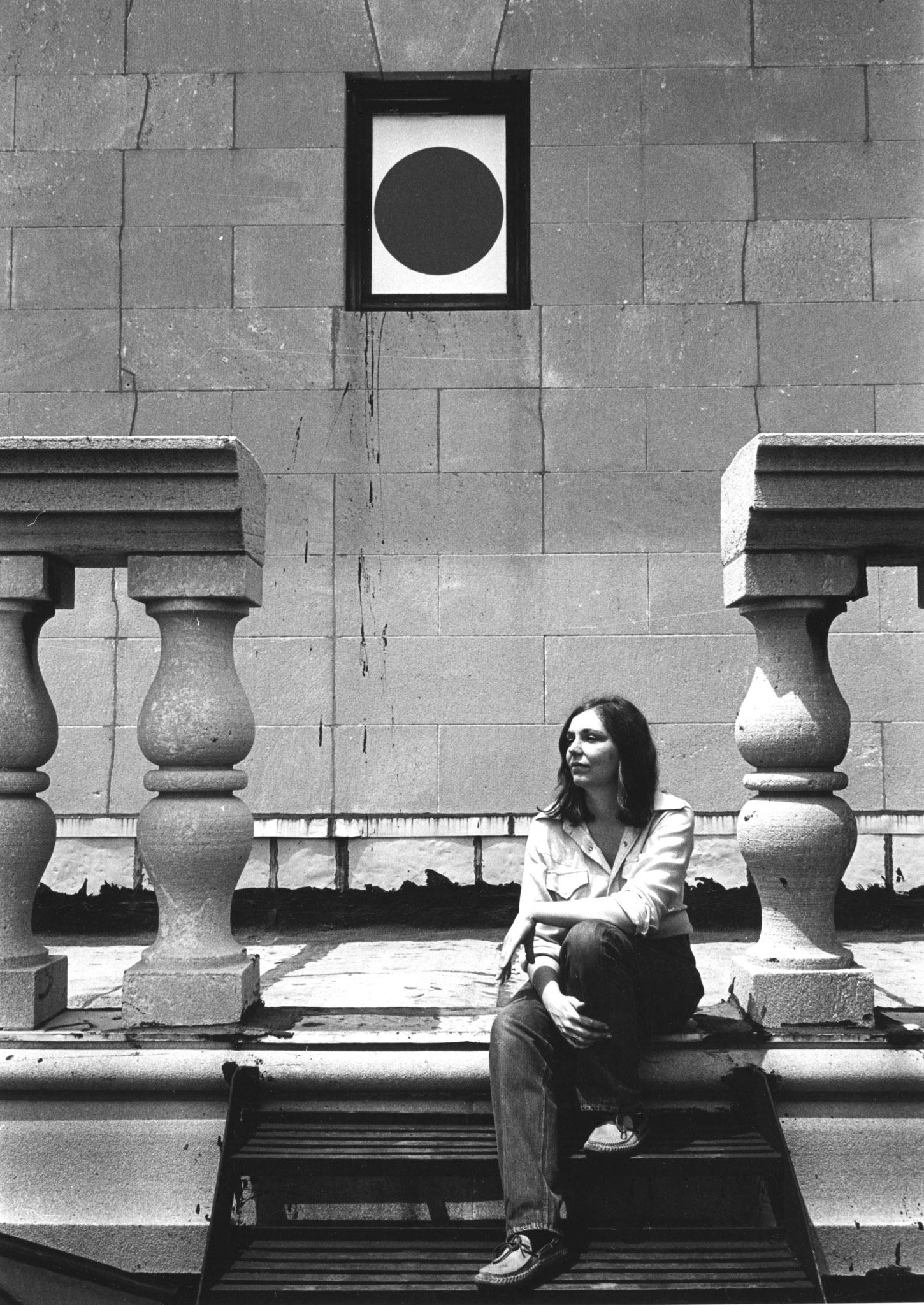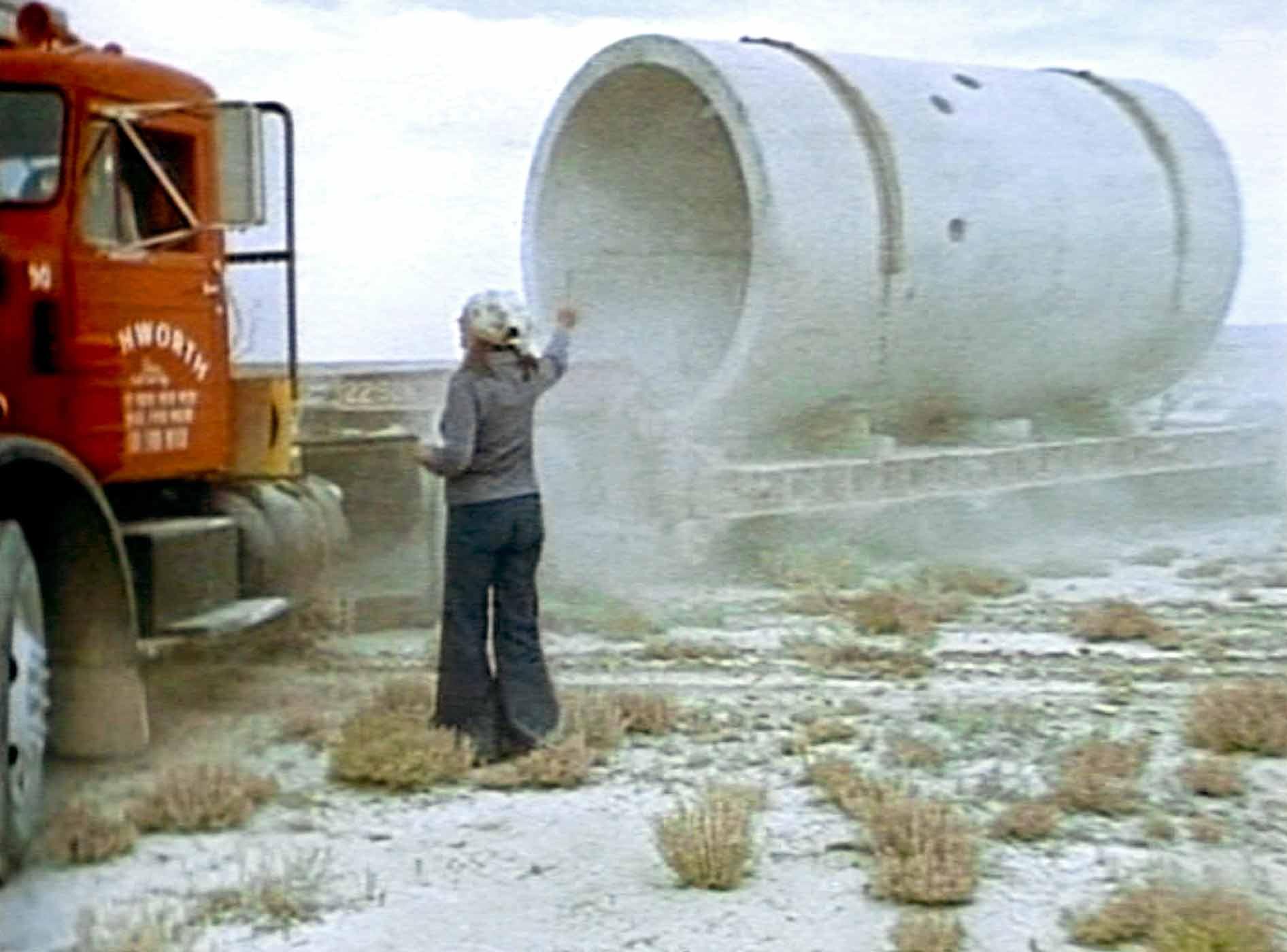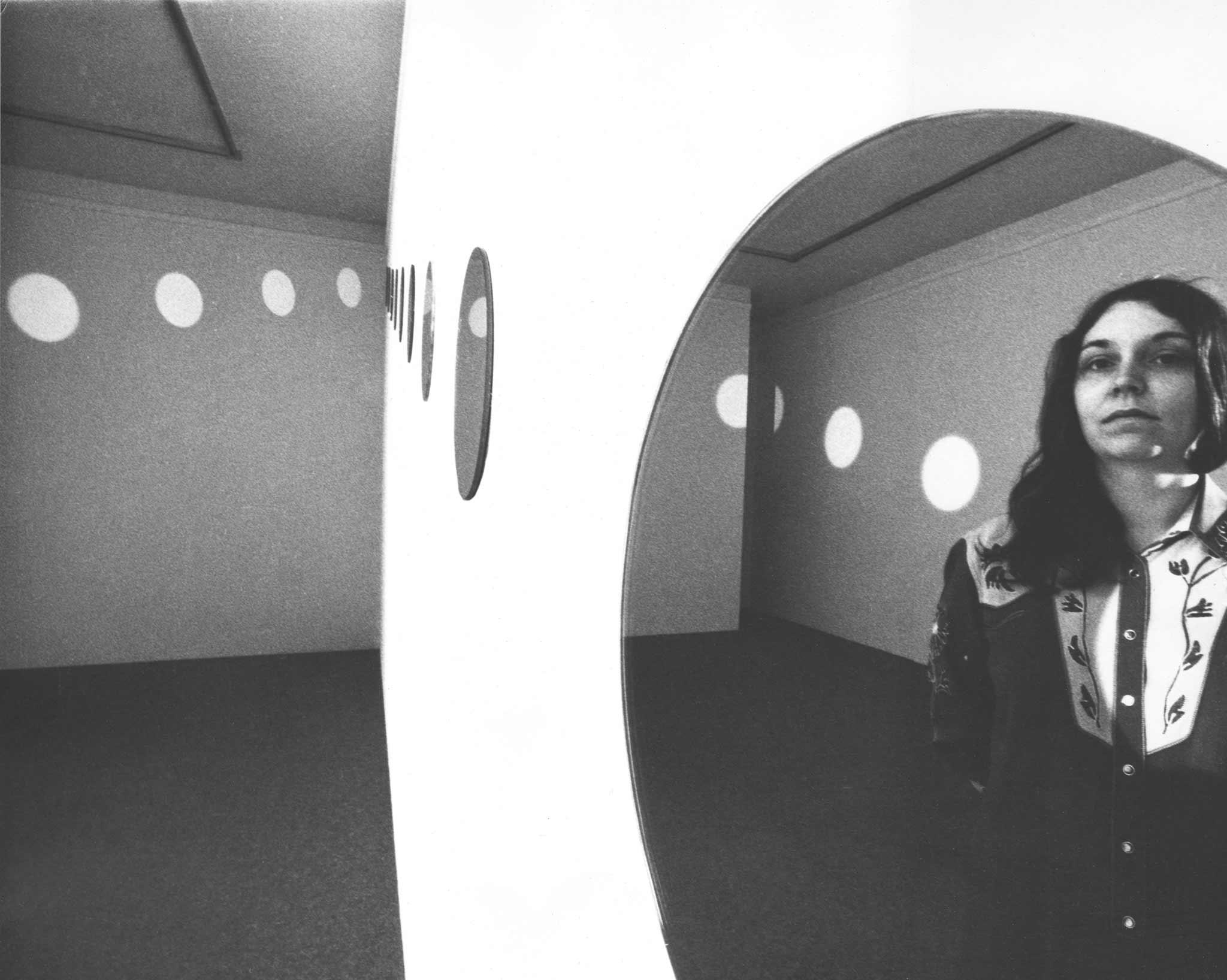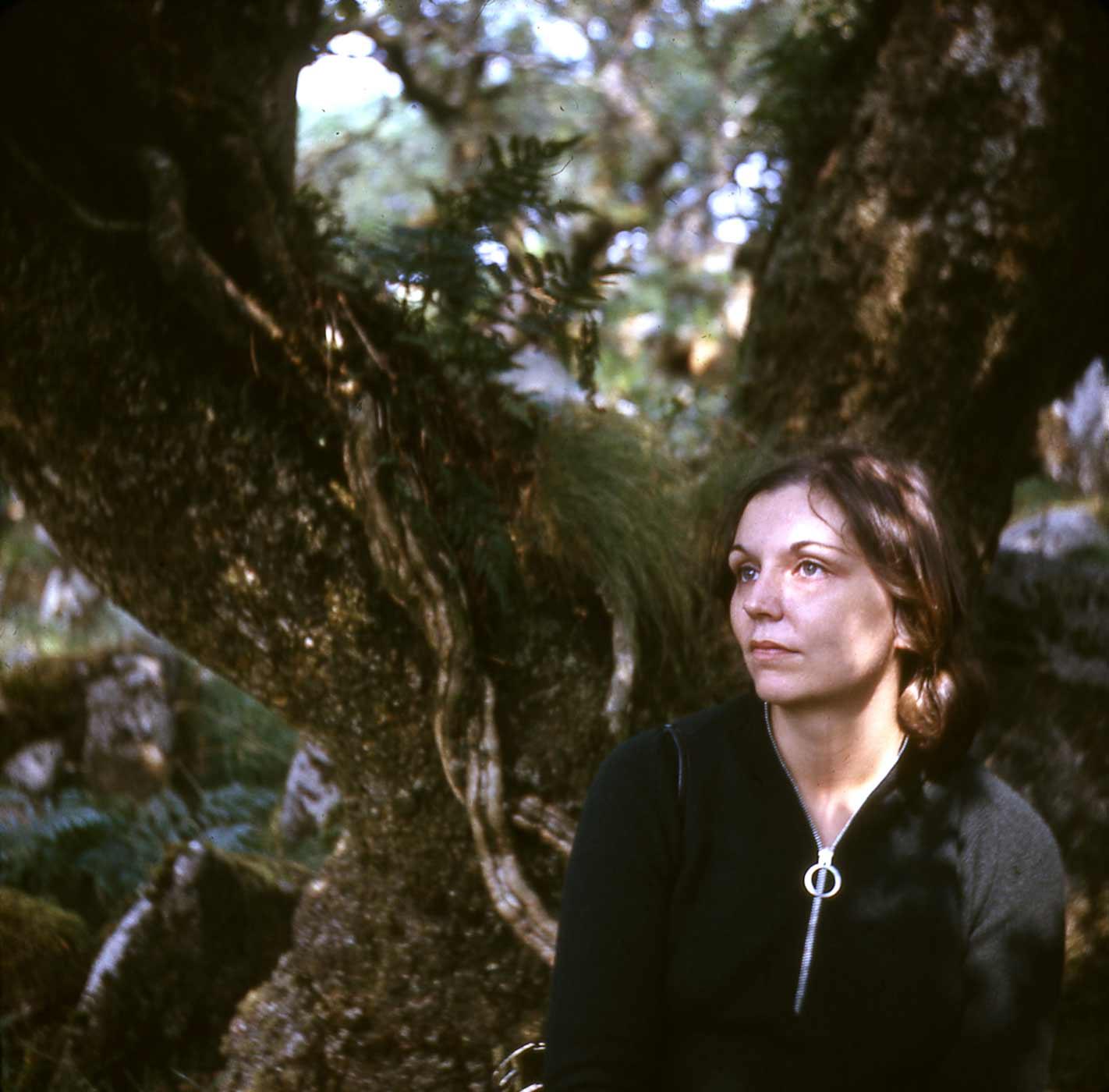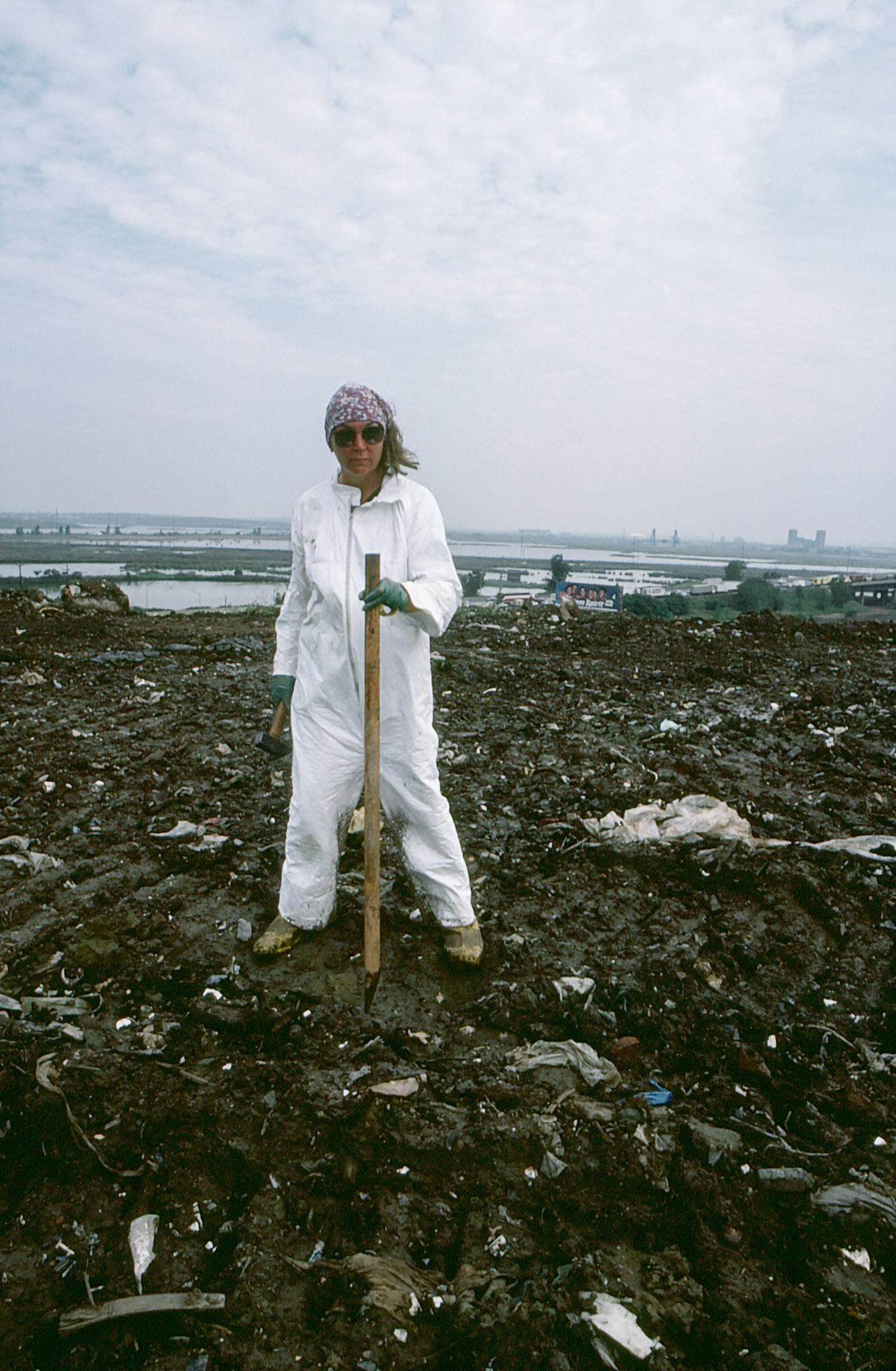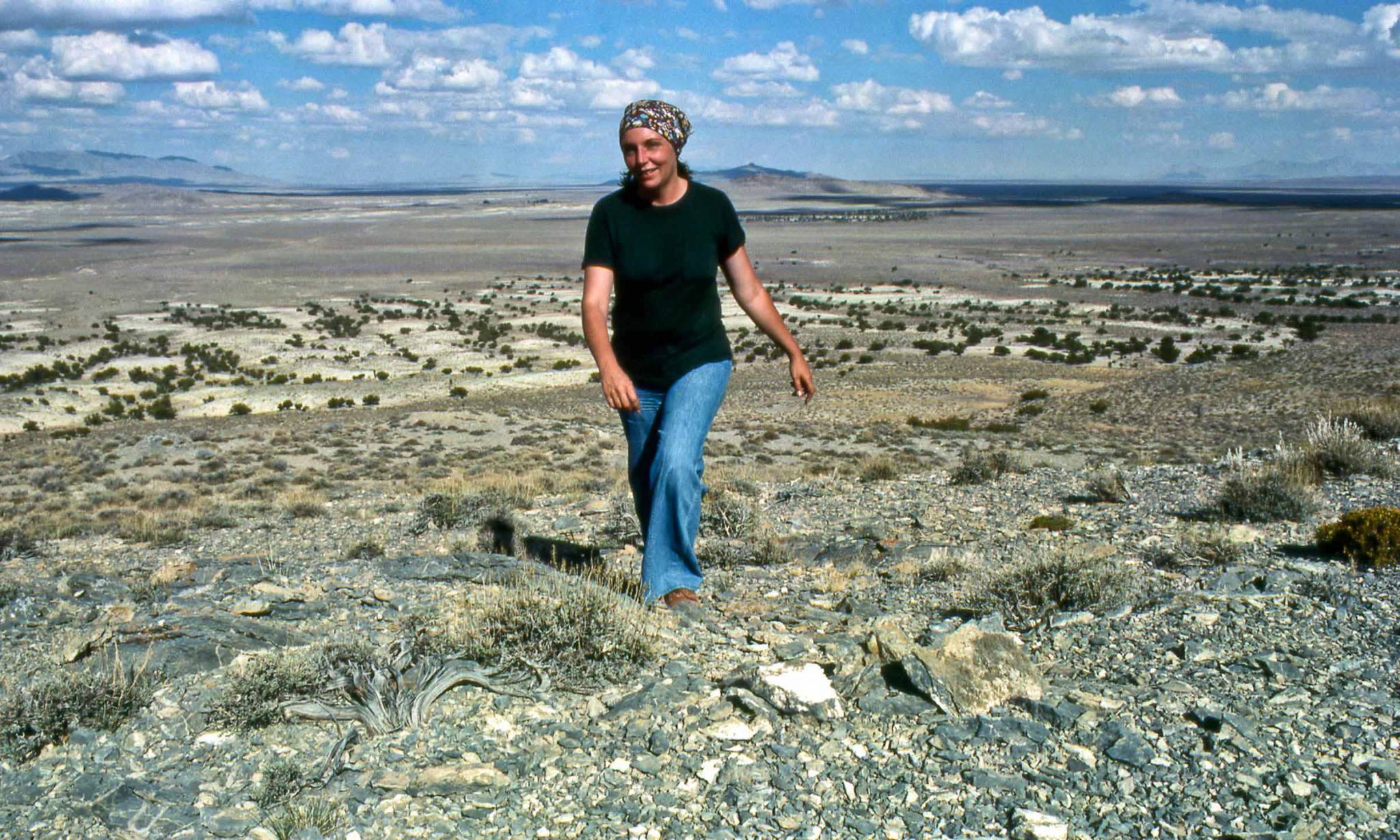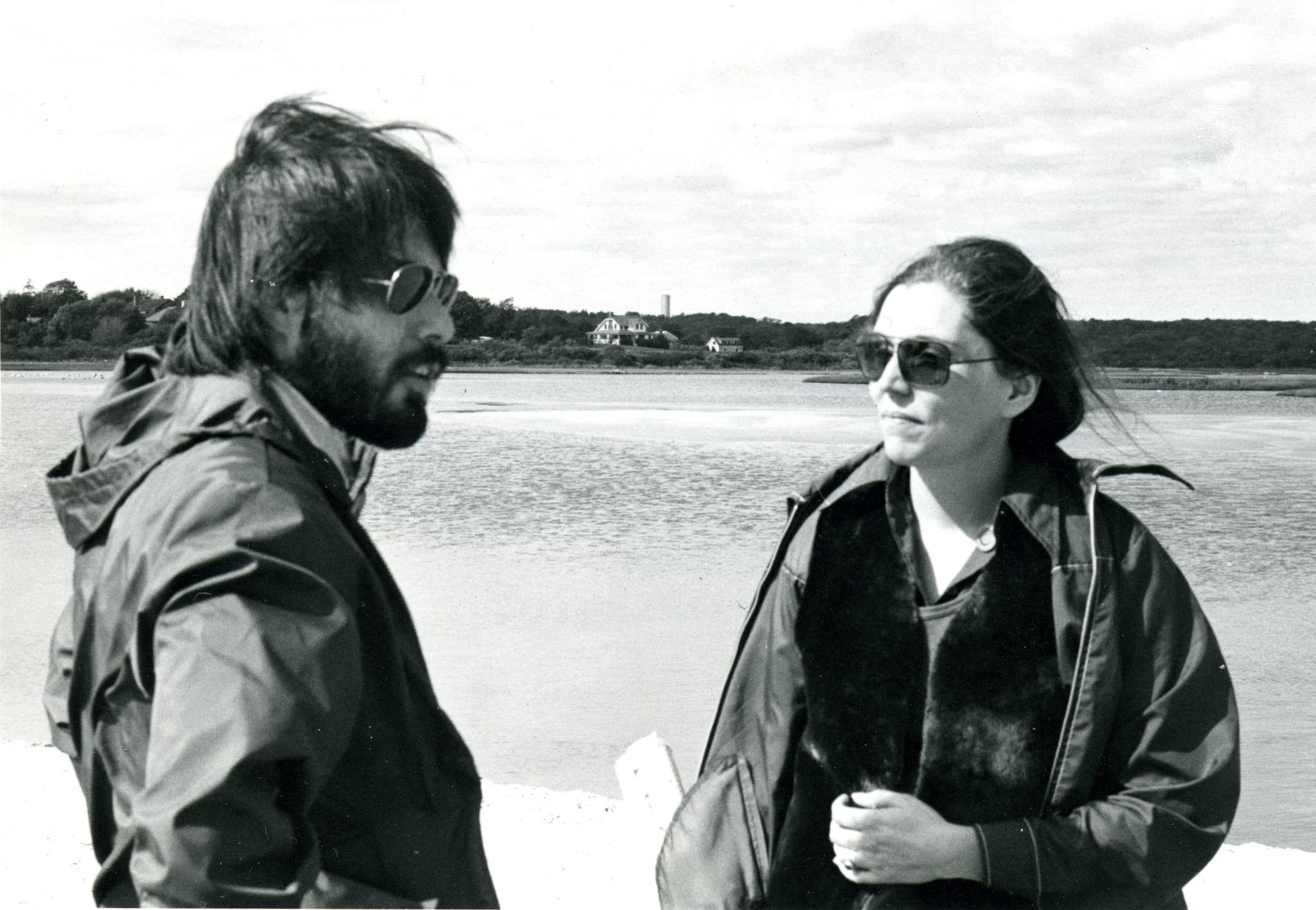
Biography
of
Nancy Holt

Nancy Holt (April 5, 1938 – February 8, 2014) was a member of the earth, land, and conceptual art movements. An innovator of site-specific installation and the moving image, Holt recalibrated the limits of art. She expanded the places where art could be found and embraced the new media of her time. Across five decades she asked questions about how we might understand our place in the world, investigating perception, systems, and place. Holt’s rich artistic output spans concrete poetry, audioworks, film and video, photography, slideworks, ephemeral gestures, drawings, room-sized installations, earthworks, artists’ books, and public sculpture commissions.
Born in Worcester in Massachusetts, Holt grew up in New Jersey. She graduated with a degree in biology from Tufts University, Massachusetts in 1960. Later that year she moved to New York City where she met the artist Robert Smithson; the two were married on June 8, 1963. The places Holt lived remained important to her: New Jersey is the site of Stone Ruin Tour (1967), Pine Barrens (1975), and Sky Mound (1984-); and Massachusetts the location of Underscan (1973-74) and Spinwinder (1991). Her earliest exhibitions were in New York: the first group presentation Language III at Dwan Gallery in 1969, and the first solo in 1972 at l0 Bleecker Street. In 1968 Holt made her first journey to the American West. The Great Basin Desert, Utah is where her landmark earthwork Sun Tunnels (1973-76) is located. In 1995 Holt made Galisteo, New Mexico her home.
“As soon as I got to the desert, I connected with the place. Before that, the only other place that I had felt in touch with in the same way was the Pine Barrens in southern New Jersey, which only begins to approach that kind of Western spaciousness.”
Holt was attentive to language as a system structuring perception and understanding of place. In the mid 1960s she worked as an assistant literary editor at the magazine Harper’s Bazaar, and in 1966 began creating concrete poems and text-based works of art. A year later she extended her exploration of language from the page to the landscape with her Buried Poems and Tours, where she guided friends to sites with written scores. In 1968 this mapping of language onto site was conducted through film and photography, in 1969 through video, then audio in 1971. Holt’s interest in the page returned in the artists’ books Ransacked (1980) and Time Outs (1985), in her own writings, and in her editorial work—which includes the first edition of The Writings of Robert Smithson (1979). She went on to trace the systems of the cosmos, the functions of the built environment, and the human mapping of landscape.
Photography was an essential medium for Holt; it enabled “vision to be fixed” and visual perception to be focused. Her early photoworks Trail Markers (1969) and California Sun Signs (1972) used seriality to create visual poems. Photography led Holt to create “seeing devices” to draw attention to visual perception and place with her Locators. Comprising T-shaped industrial piping to be looked through with one eye, the Locators first focused on views in and from her studio, expanding into the landscape with Missoula Ranch Locators: Vision Encompassed (1972). In turn, the Locators led to her earthworks Sun Tunnels and Hydra’s Head (1974), which “brought the stars down to earth.”
“I feel that the need to look at the sky—at the moon and the stars—is very basic, and it is inside all of us. So, when I say my work is an exteriorization of my own inner reality, I mean I am giving back to people through art what they already have in them.”
Holt was equally interested in the built environment as she was natural and celestial landscapes. Whether emanating from the stars or plugged into electricity grids, the perceptual qualities of light fascinated her. The room-sized installation Holes of Light (1973) used switching electrical light and Mirrors of Light (1974) a theater spotlight and mirrors to materialize light reflections and bring awareness to the body in space. Similarly the Visual Sound Zones (1972-79) heighten consciousness of space. These audioworks describe interior spaces in detail, such as John Weber Gallery and PS1: locations at the heart of 1970s experimental art.
In the 1980s, Holt’s exploration of systems moved to the fabric of the built environment with functional sculptural installations she termed System Works. Using standard industrial materials designed for heating, ventilation, lighting, drainage—as well as the raw materials of fossil fuels and waste—the System Works are connected to internal architectural organs.
“The electrical systems light, the heating systems heat. The drainage systems drain, the ventilation systems circulate air […] the sculptures are exposed fragments of vast hidden systems, they are part of open-ended systems, part of the world.”
Electrical System (1982) comprises a network of arching conduit and light bulbs connected to the museum’s power system. Holt’s Pipeline works, created in Alaska using industrial materials, call attention to the physical and economic systems powering the buildings in which they were exhibited. These investigations of light and systems continued at a larger scale in Holt’s later outdoor sculptures. Commissioners included Western Washington University (Stone Enclosure: Rock Rings, 1977-84), the 1980 Winter Olympics (30 Below, 1979), the New York Subway (Astral Grating, 1986), and Arlington Public Art (Dark Star Park, 1979-84). Many, but not all, of Holt’s sculptural ideas were realized, and she used drawing as a medium to think through and articulate her sculptural thinking. Her works on paper range from careful detailing to mathematical calculations and full renderings.
In 2010-12 the retrospective Nancy Holt: Sightlines surveyed her five decades of art making, accompanied by a monograph edited by Alena J Williams, published by University of California Press. Nancy Holt passed away in New York City in 2014. From 1973 until 2014 she cared for the Estate of Robert Smithson, whom she married in 1963. In 2014 Nancy Holt willed Holt/Smithson Foundation into being.
Since the Foundation’s inception in 2018, expansive solo exhibitions have been presented at Dia: Chelsea (2019; New York), Bildmuseet (2022; Umeå, Sweden), MACBA (2023; Barcelona, Spain), Gropius Bau (2024; Berlin, Germany), and the Wexner Center for the Arts (2025; Columbus, Ohio, USA). Sprüth Magers represents Nancy Holt, and have presented the solo exhibitions Echoes & Evolutions: Nancy Holt’s Sun Tunnels (2025; New York), Locating Perception (2022; Los Angeles) and Mirrors of Light (2021; Berlin). Holt’s work has featured in important group exhibitions including Groundswell (2023; Nasher Sculpture Center, Dallas), Ecstatic Land (2022; Ballroom Marfa, Texas), Sound as Sculpture (2022; The Warehouse, Dallas), and Light and Language (2021; Lismore Castle, Ireland).
Current and Forthcoming Exhibitions
In current group exhibitions in Europe, Holt is featured in the group exhibition Remain in Light at Kunsthalle Bielefeld, Germany where Locator with Spotlight and Sunlight (1972), Dual Locators (1972), and Light and Shadow Photo Drawings (1978) are on show through to March 1, 2026; in Paris, at the Bourse de Commerce, Locators with Loci (1972) is included in Minimal (to February 16, 2026); in Berlin Sun Tunnels: Shifting Shadows (1976) is on show in Extreme Tension. Art between Politics and Society - Collection of the Nationalgalerie 1945 - 2000 at Neue Nationalgalerie; and in Austria, at Galerie Elisabeth & Klaus Thoman, the photographic series Miami Puddles (1969), California Sun Signs (1972), and Alaskan Pines (1986) are on display through to the end of January 2026.
In the USA, Holt’s Locator (Studio Corner) (1971) is on show in Shifting Landscapes at the Whitney Museum of American Art, New York; and work by both Holt and Robert Smithson are included in Joan Jonas: An Island Departure, with Nancy Holt and Robert Smithson at the Farnsworth Art Museum in Rockland, Maine until March 1, 2026.
Upcoming in 2026, Goodwood Art Foundation in the United Kingdom presents from May 2026, a solo exhibition of Nancy Holt’s work.
Collections
Holt’s work is held in major collections including the Art Institute of Chicago; Dia Art Foundation, New York; Museum of Modern Art, New York; Museum für Gegenswartkunst, Germany; Utah Museum of Fine Arts; and Whitney Museum of American Art, New York.
Works by Holt are permanently installed at public institutions including Miami University Art Museum; University of Massachusetts, Dartmouth; Western Washington University; and University of South Florida. For locations of extant outdoor works by Holt see our map and visiting instructions.
Awards
In 2012 Nancy Holt was made a Chevalier of the of the Ordre des Arts et des Lettres by the French Government. In 2013 she was presented with a Lifetime Achievement Award by the International Sculpture Center in New York. Holt received five National Endowment for the Arts Fellowships, two New York Creative Artist Fellowships, a Guggenheim Fellowship, and an Honorary Doctorate from the University of South Florida, Tampa.
Galleries
Nancy Holt is represented by Sprüth Magers.
Curriculum Vitae
Nancy Holt’s curriculum vitae can be downloaded above (underneath the Biography header). We are working towards a comprehensive document, and we welcome additions and corrections. Be in touch by emailing contact@holtsmithsonfoundation.org.
What I was doing over and over again was manifesting outwardly in physical form the universe as it is within.
—Nancy Holt
Meyer, James. "Interview with Nancy Holt." In Sightlines, edited by Alena J. Williams, 230. Berkeley: University of California Press, 2011.
